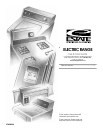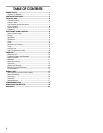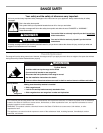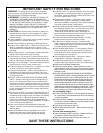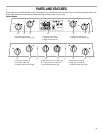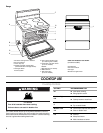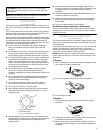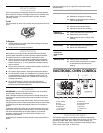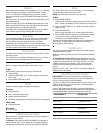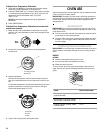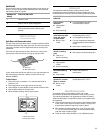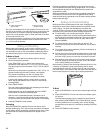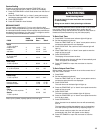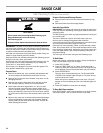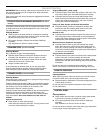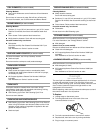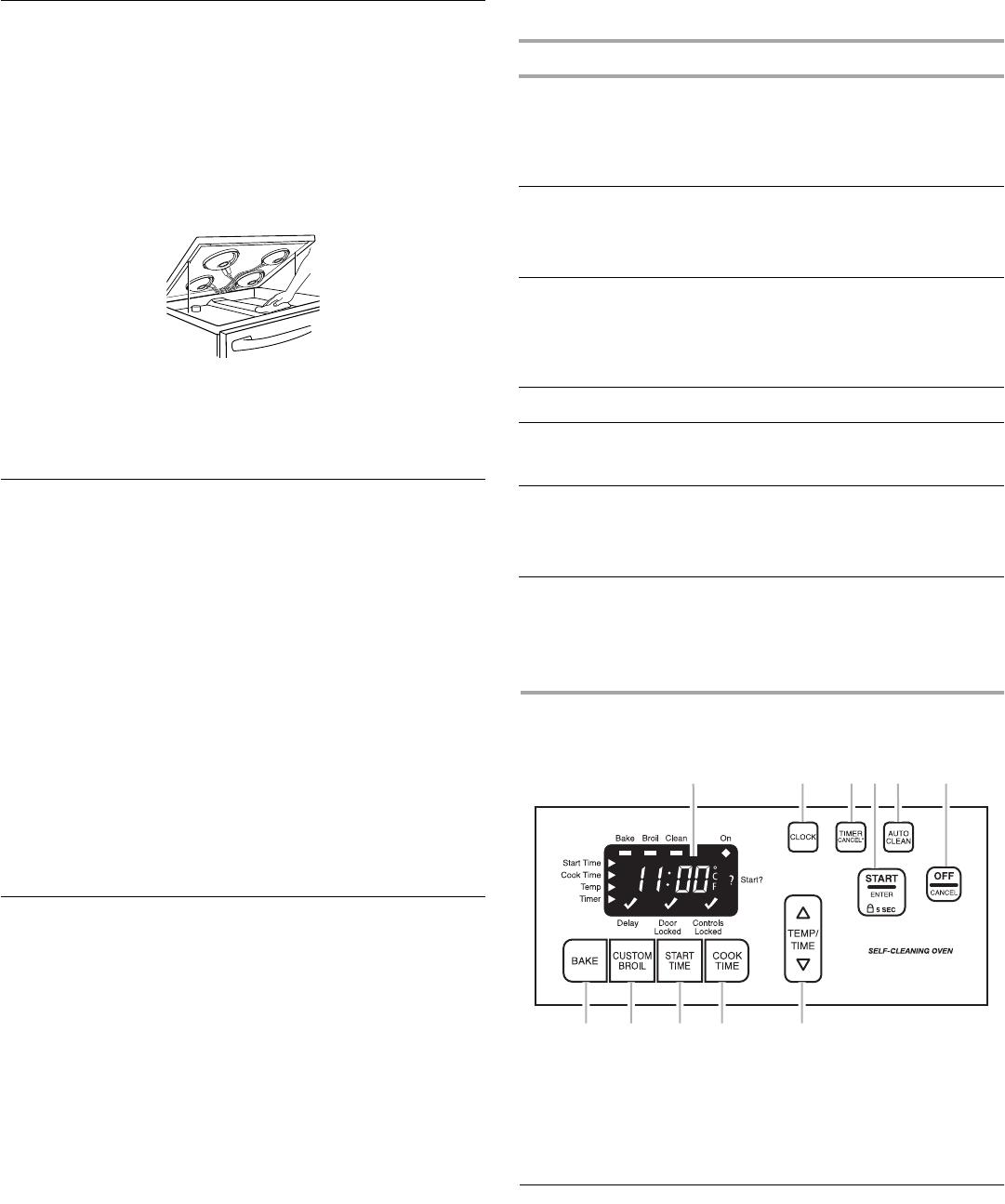
8
Lift-up Cooktop
(on some models)
The lift-up cooktop provides easy access for cleaning beneath.
Do not drop the cooktop. Damage could occur to the finish and
the cooktop frame. For more information, see the “General
Cleaning” section.
To Lift:
Lift the cooktop by both front corners until the supports lock into
place.
To Replace:
1. Lift the cooktop from both sides while pressing the support
rods back to unlock them.
2. Slowly lower the cooktop into place.
Home Canning
When canning for long periods, alternate the use of surface
cooking areas, elements or surface burners between batches.
This allows time for the most recently used areas to cool.
■ Center the canner on the grate or largest surface cooking
area or element. On electric cooktops, canners should not
extend more than ½" (1.3 cm) beyond the surface cooking
area or element.
■ Do not place canner on 2 surface cooking areas, elements or
surface burners at the same time.
■ On ceramic glass models, use only flat-bottomed canners.
■ On coil element models, the installation of a Canning Unit Kit
is recommended. If a kit is not installed, the life of the coil
element will be shortened. See “Assistance or Service” for
ordering instructions.
■ For more information, contact your local agricultural
department. Companies that manufacture home canning
products can also offer assistance.
Cookware
IMPORTANT: Do not leave empty cookware on a hot surface
cooking area, element or surface burner.
Ideal cookware should have a flat bottom, straight sides and a
well-fitting lid, and the material should be of medium-to-heavy
thickness.
Rough finishes may scratch the cooktop. Aluminum and copper
may be used as a core or base in cookware. However, when used
as a base they can leave permanent marks on the cooktop or
grates.
Cookware material is a factor in how quickly and evenly heat is
transferred, which affects cooking results. A nonstick finish has
the same characteristics as its base material. For example,
aluminum cookware with a nonstick finish will take on the
properties of aluminum.
Cookware with nonstick surfaces should not be used under the
broiler.
Use the following chart as a guide for cookware material
characteristics.
ELECTRONIC OVEN CONTROL
Oven Indicator Lights
The indicator lights are located along all 4 sides of the display.
The indicator lights light up or flash when the oven is in one of the
following modes: Bake, Broil, Clean (on some models), On,
Start?, Controls Locked, Door Locked (on some models), Delay,
Timer, Temp, Cook Time, or Start Time.
COOKWARE CHARACTERISTICS
Aluminum
■ Heats quickly and evenly.
■ Suitable for all types of cooking.
■ Medium or heavy thickness is best for
most cooking tasks.
Cast iron
■ Heats slowly and evenly.
■ Good for browning and frying.
■ Maintains heat for slow cooking.
Ceramic or
Ceramic glass
■ Follow manufacturer’s instructions.
■ Heats slowly, but unevenly.
■ Ideal results on low to medium heat
settings.
Copper
■ Heats very quickly and evenly.
Earthenware
■ Follow manufacturer’s instructions.
■ Use on low heat settings.
Porcelain
enamel-on-
steel or cast
iron
■ See stainless steel or cast iron.
Stainless steel
■ Heats quickly, but unevenly.
■ A core or base of aluminum or copper
on stainless steel provides even
heating.
A. Oven display
B.Clock
C.Timer/cancel
D.Start/enter
(control lock)
E.Auto clean
F. Off/cancel
G.Temperature/time
H.Cook time
I.Start time
J.Custom broil
K.Bake
ABCDEF
KJ
IH
G



